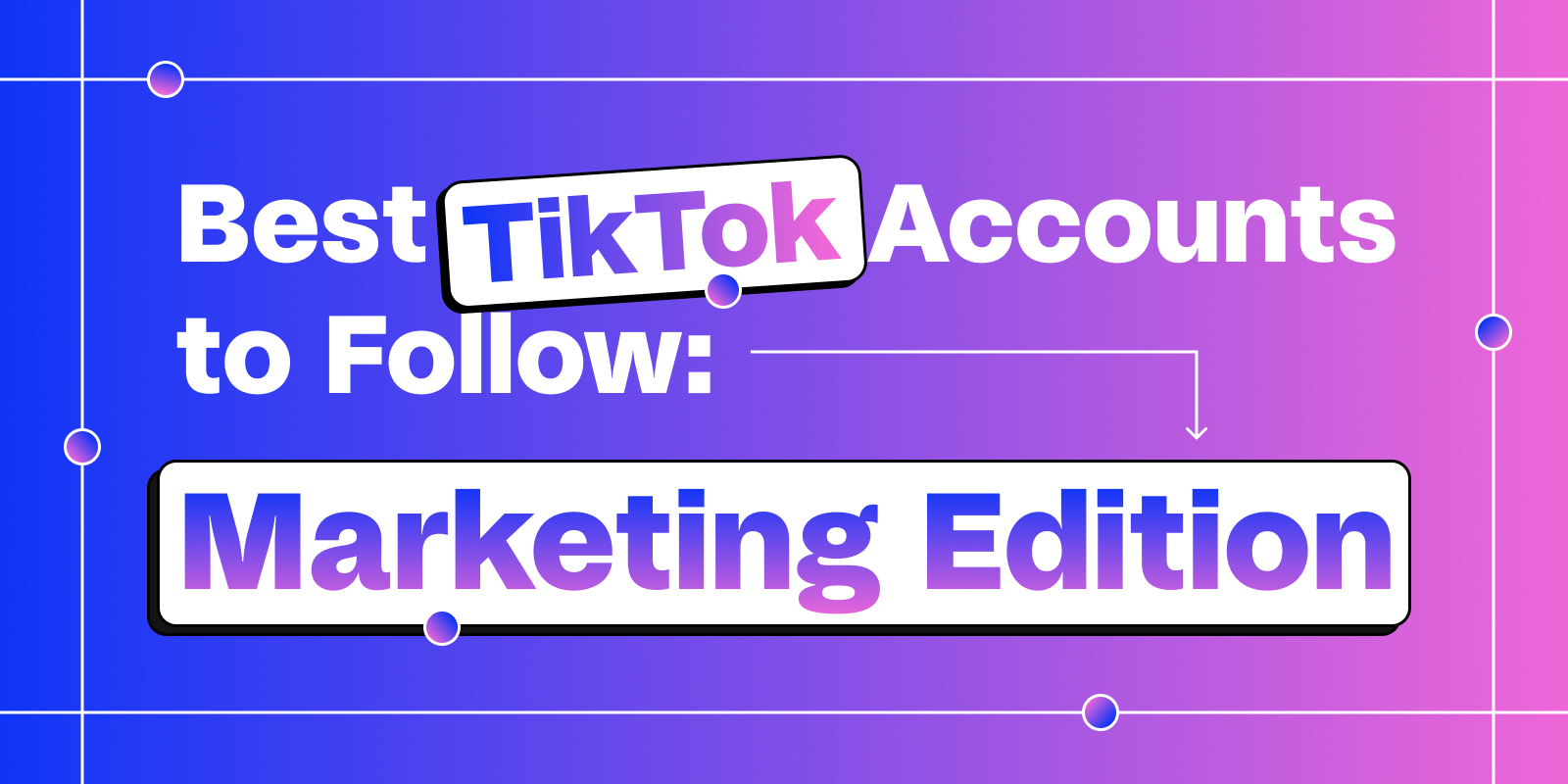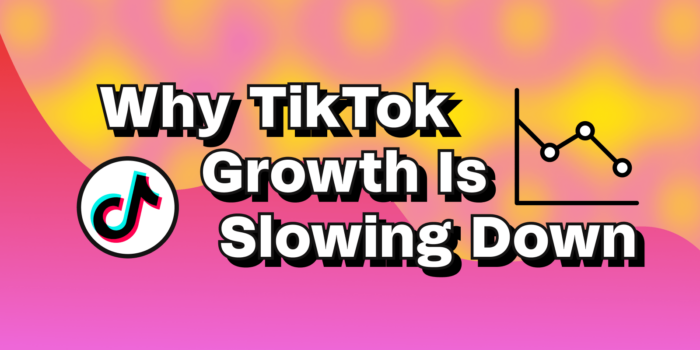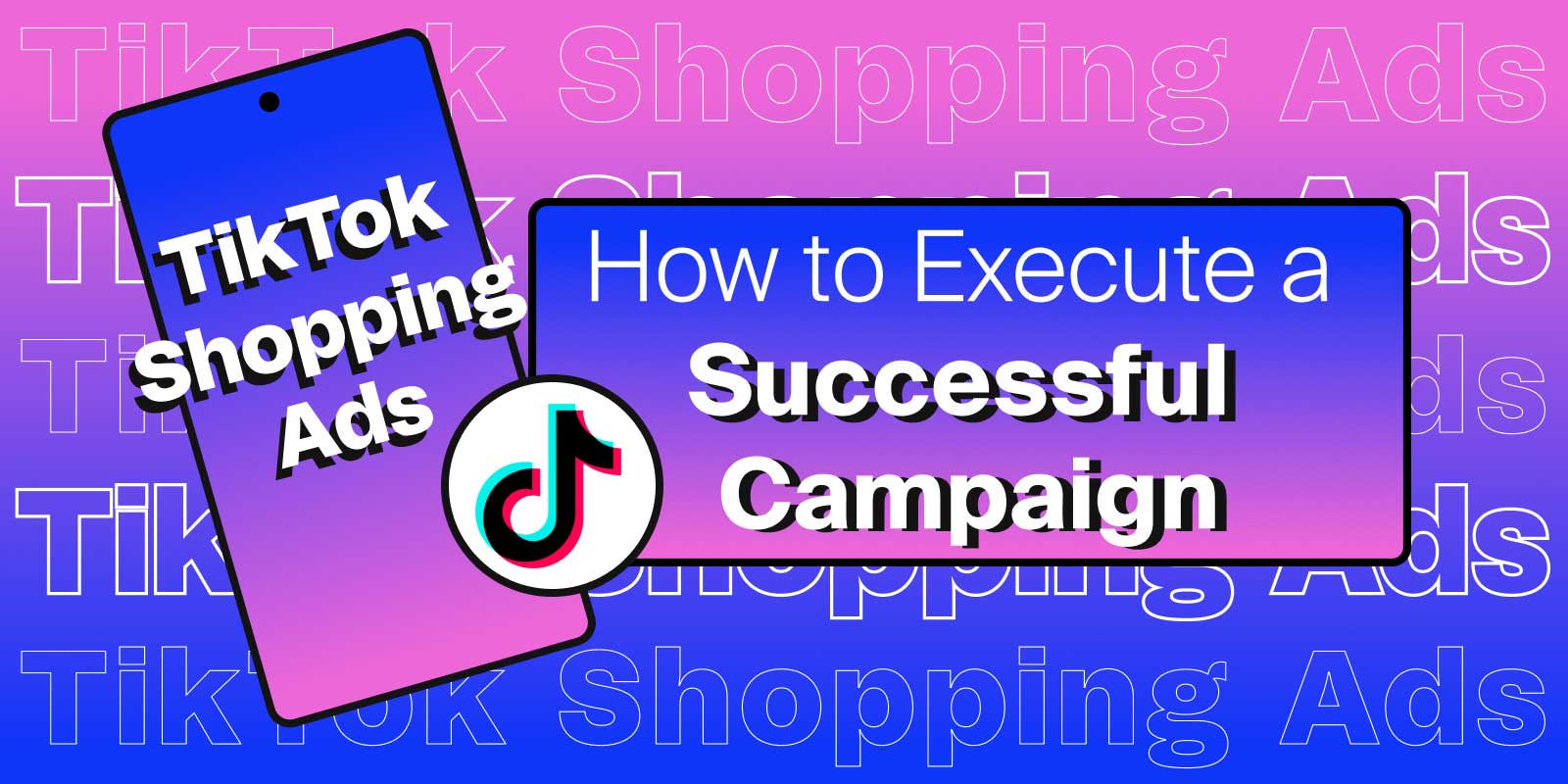It’s been a few years since TikTok arrived on the scene with its short-form vertical videos and has since fundamentally changed the way video content is delivered to consumers in the digital landscape.
Over this time, we’ve seen hundreds of brands leverage this unique platform to market themselves to new audiences in creative ways.
But launching a brand successfully on TikTok is not as simple as just uploading some videos onto the platform. It’s a lot more complex for a number of reasons — including but not limited to the authentic and community-driven nature of the platform, lack of tolerance for anything overly promotional, and, of course, the increasing saturation of content, creators and brands that crowd the space.
A lot more brands today than even a few months ago recognize the need to be on TikTok, but not sure what the fundamental starting points are. If you are still in the camp of brands that are still considering TikTok to begin with, let us make the case for why TikTok should be an essential part of your content strategy and what strategic value it carries for brands overall.
Why Should Brands Use TikTok?
Brand Awareness
TikTok has the potential to expose your brand to millions of people in a very short amount of time. It’s one of the leading social media platforms for social capital generation, building community, and ensuring you are top-of-mind for consumers. Every month, new brands are going viral through either digital word of mouth, influencer endorsements, or just viral organic content your brand posts. It does all this at a relatively low cost.
Brand Image/Voice
Most brands have difficulty connecting with their customers in an authentic and relatable way.
TikTok allows brands to craft a brand image that users who are looking for authenticity and human connection can engage with. TikTok is a fun, light-hearted entertaining social platform where brands can not only connect with a brand new audience through engaging content, but also have the opportunity to position themselves in a positive light and build on that image.
TikTok is a unique challenge for brands in that it often pushes them to put themselves in the users’ shoes more actively. The humanizing aspect creates a whole new mode for brands to refresh their positioning, refine the brand voice and image from a more relatable lens, and leverage short-form video — which provides more real estate — to tell the brand’s story.
Target Audiences and Native Ad Formats
The TikTok audience might have started with 13-24, younger audiences, but it’s evolving and growing quickly, providing brands access to audiences across a wider variety of age groups. As of 2023, 61% of the audience skewed 25+ in age — and the platform attracts new and more diverse age groups every single day.
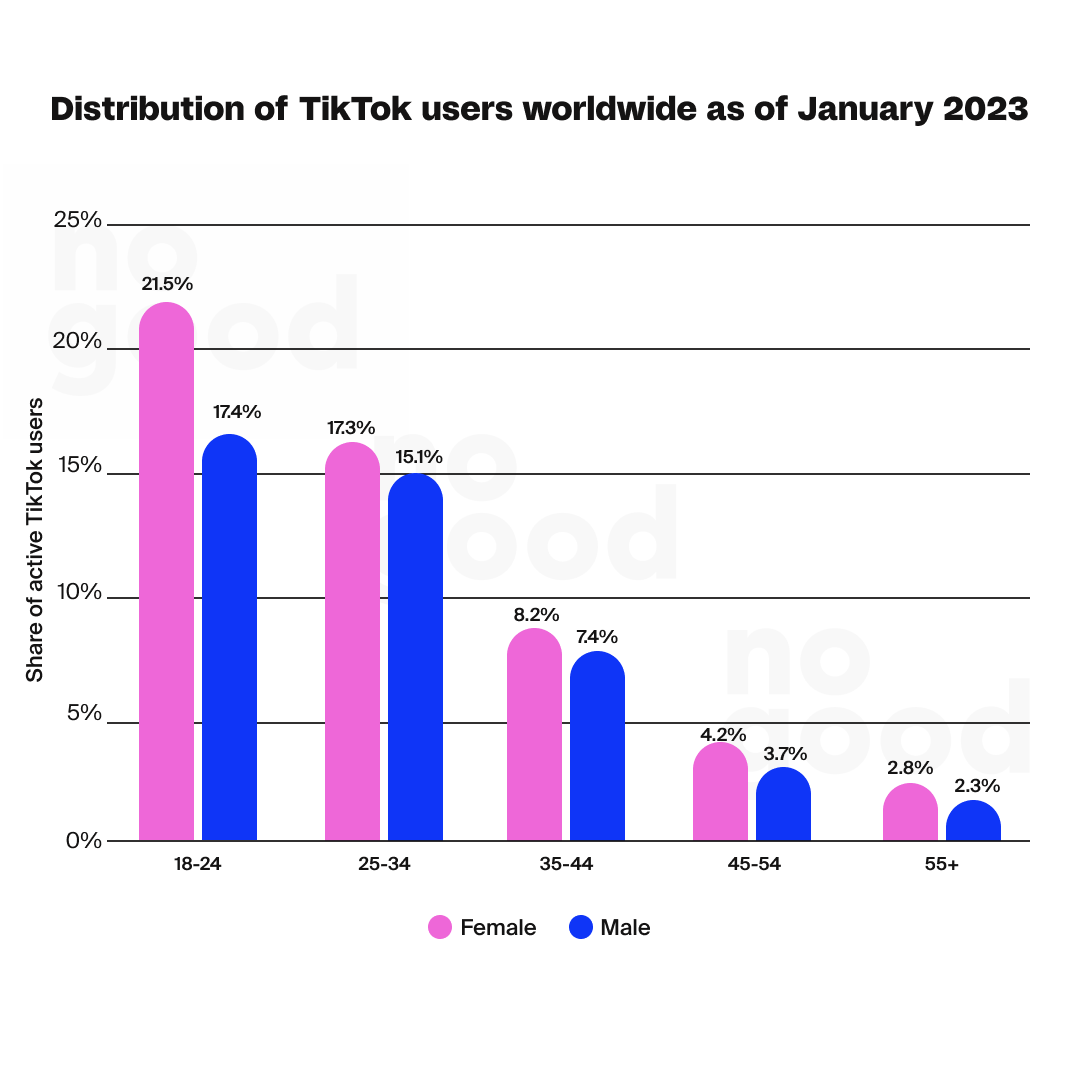
TikTok has millions of daily active users that can be targeted by age, location, interest, hashtags, and even types of creators they follow. Advertising on TikTok can be way more effective than on other platforms because the acceptable ad format here is inherently native to the platform — think raw, educational or entertaining, user generated content-style videos that are not explicitly promotional. Ads will typically appear in the feed and will look similar to regular content — in other words, the ads (the best ones, at least) fit naturally into the user experience.
It’s a touch point for your business like no other because you can tell your brand’s story, showcase your product, its benefits, show off your company culture and personality all in a few short videos.
It makes brands accessible to the hundreds of communities that already exist in the space.
Key Elements To Incorporate In Your TikTok Content:
Trends/Trending Sounds:
TikTok is built on trends. You’ll notice when you scroll through your For You page you might hear the same song, see the same edit, or same filter/effect used by many TikTok users simultaneously. That’s because the TikTok algorithm encourages and rewards accounts that participate in what’s popular on the platform. Your videos have a better chance of reaching a larger audience if you incorporate some type of trending element into your video.
This recommendation comes with a disclaimer, though: it’s very important that your brand doesn’t hop on every trend possible for the sake of views. TikTok is all about community and intentionality — and when you decide to partake in a trend or a conversation, you’ll need to add your own voice, perspective and style to it. Make the trend your own. This also gives you the opportunity to showcase your brand’s creativity and how well you can contribute to the trend.
Humor:
It’s important as a brand to not take yourself too seriously on this platform. TikTok is a creative playground that loves humor-based and entertainment-first content. There is a reason TikTok is inherently a discovery, rather than social, platform — in addition to competing with Instagram and YouTube, it’s in an equal rivalry with the likes of Netflix, Disney+ and HBO Max.
Making funny and relatable content will help humanize your brand and make TikTok users feel more comfortable interacting with and sharing your content. Humor is a great way to make your brand seem more authentic, especially if you are willing to poke fun at yourself.
DIY Feel:
It’s common that brands who post polished content that looks like it requires a whole TV crew, set, and editing team won’t see high views or engagement. Even though TikTok is a video-focused app, the highest quality video content will not always perform well on it. That’s because most TikTok users do not have access to this level of equipment or editing skill, and the platform naturally prioritizes unpolished, raw and user-generated content first.
Side note — this is exactly the reason why TikTok has acted as a key catalyst in the creator economy boom and the enablement of creators across a variety of sizes, from nano to mega.
Content that is outright well produced sticks out like a sore thumb compared to most of the DIY-looking content in the feed. Those expertly produced videos might work on television or a YouTube ad but they won’t work on the For You page. Most creators will rely more on the viewer’s imagination when it comes to creating content that’s more elaborate. What’s most important is that you don’t overproduce your content. All you need to make a great quality TikToks is a smartphone, some good lighting and a creative mind.
Community:
Your TikTok page is a great opportunity to create or build out a community surrounding your brand. Some great first steps to doing so are engaging with your followers in the comments, making your own hashtags, and even starting your own trends. TikTok’s most community-focused feature is the video reply feature which allows you to post videos in response to comments — which, in turn, creates an opportunity to directly guide the direction of your content. If a user has a question about your brand, you can then create a video answering that question which can be useful as a standalone piece of content for your page. In other words, this allows you to create a self-sustaining content production loop, ensuring you never run out of ideas for video content that answers the needs and interests of your audience directly.
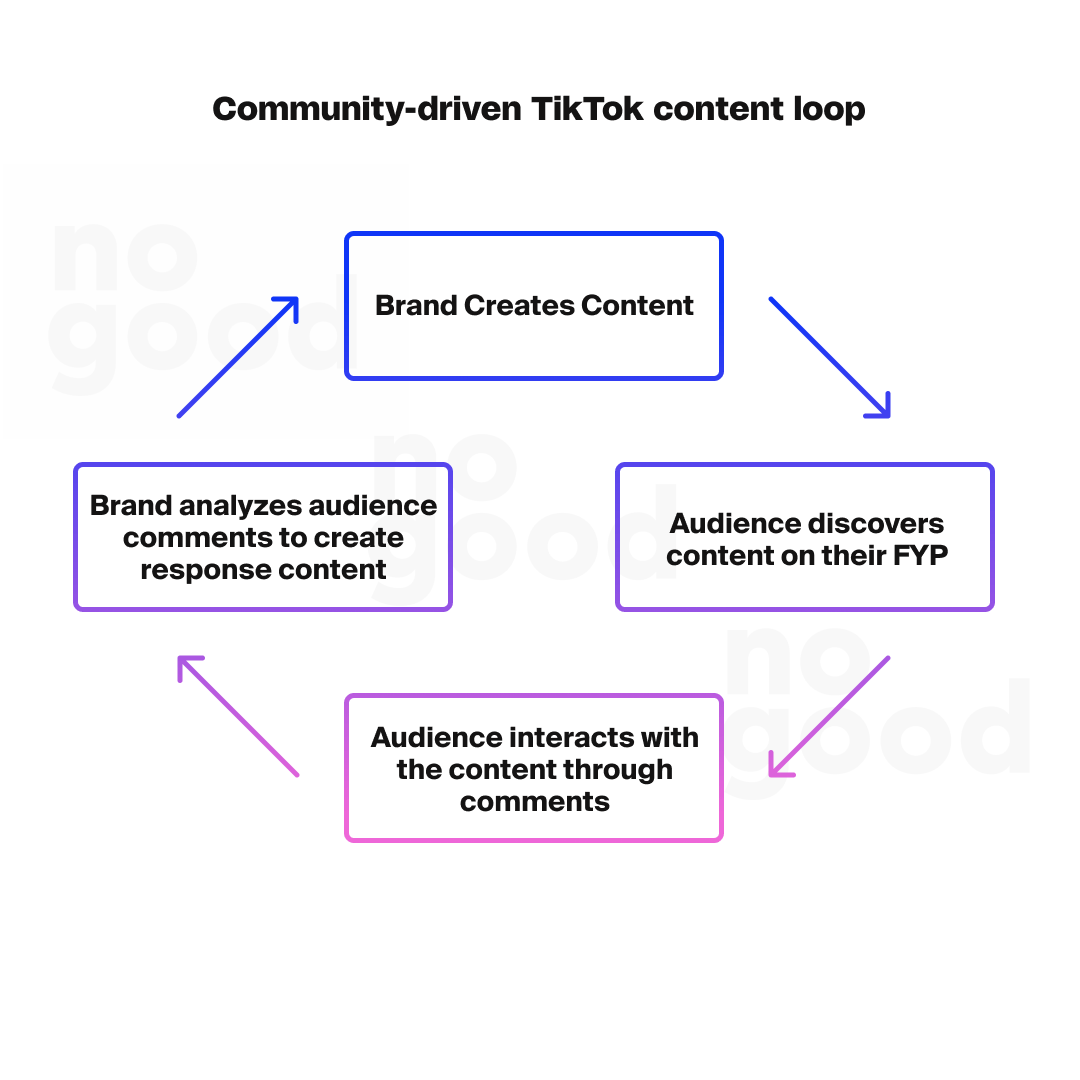
Community will build itself as your following does — but making sure your brand is fostering that growth will be important to how much consumers will care about your brand.
Storytelling:
Every brand has a unique story and there has never been a better platform to tell that story than TikTok. Bottom line: TikTok loves “storytime” videos. Many creators have built their entire following off being great storytellers. You might be thinking, “What if my brand story isn’t necessarily entertaining?” Well, there are plenty of ways to incorporate storytelling into your content — and leverage short-form video to pull the curtain and offer the audience a peek into the history and culture of your brand.
You could make a video about the story behind a new product or even document the story of how your newest intern was hired. Storytelling on TikTok isn’t about having a captivating and enthralling tale to tell, but rather about keeping the users engaged and interested in your brand. It’s the TikTok equivalent of world-building. It allows users to get an inside look and understanding of your business.
How To Make Good TikTok Content
TikTok currently has over 1 billion users. It’s extremely important that the content you post aligns with the company’s vision for ideal content. Your videos should be engaging and, most importantly, entertaining. Unlike Instagram and other social media apps, TikTok is an entertainment platform so your content needs to keep people watching.
The most popular videos on the platform are less than 20 seconds and usually lean heavily on music or a popular sound. Of course, there is a push for longer-form content to also perform on the platform — but this creates the challenge of maintaining user attention for a longer time and ensuring that the dynamics of the video entertain and educate the user every few seconds.
Here’s a list of elements that make for great content:
- Duration. Each video should be 20-45 seconds long. Although TikTok allows up to 3-minute videos, the most successful videos on the platform are on average around 6 seconds. Making sure your content is short and sweet will help get it seen by more users.
- Music/trending sounds. One of the reasons TikTok is so popular is that it allows users to incorporate fun music and sounds into their videos which makes all that more entertaining.
- Hooks Most TikTok users will give a video about 1.5 secs until they decide to watch more or keep scrolling. Opening your video with an interesting hook like “I found the secret to the best night’s sleep” will increase the likelihood of users watching your content.
- Visual aids and cutaways. Having videos that have the same shot throughout will come across as boring. Adding editing elements like cutaways, visual aids, and voice \overs will enhance your content and keep users watching until the end!
- Lighting. A lot of new creators struggle to understand the importance of good lighting. TikTok tends to prefer bright videos that are well-lit. Good lighting will make the people and things featured in your video look a lot better.
- Audio. Making sure your viewers can clearly hear your content is almost more important than making sure they can see your content. A video that is muffled or has too much background noise will make users keep scrolling. Filming content in a quiet environment or investing in some alternative sound equipment will make sure your videos are heard.
- Captions. It has become almost a standard practice around the internet to include some type of captions in your videos. This helps extend the accessibility of your content. Users will be able to enjoy your content regardless if the sound is on or not. It will also help users comprehend what you’re saying quickly and will keep them interested.
- In-Video Titles. As I’ve mentioned, the beginning of your videos is extremely important. What you have in the first few seconds will determine if a user keeps watching your video or not. Using In-Video titles helps tell the user what exactly your video is about and in many cases can keep them watching. If your video features a story about a new product, having a title in the beginning like “The Story behind our newest product” will help the user understand what to expect out of the video.
How to Develop a TikTok Strategy
Your strategy for TikTok will depend greatly on what kind of brand you are and how you want to position your company, but there are some fundamental things every brand should be doing before they launch their TikTok.
Step 1: Research
One of the best ways to figure out a good strategy is to look at similar brands or even competitors. Start paying attention to how they go about posting content.
Answer these questions:
- How many times do they post a day?
- What kind of content are they making?
- What are their biggest videos?
- How long are their videos?
- How often are they partaking in trends?
Gathering as much information as possible about brands in similar niches to your own will help you figure out what elements will work best for your brand and serve as an initial north star for you to follow. It’s important not to just copy your competitors but to learn from them. While doing your research, you should also identify what they might be doing wrong. See what videos they post aren’t performing well and take notes on those as well.
Step 2: Building a Content Strategy
After looking at competitors and other TikTok accounts in your niche, begin defining what type of content you want to post on your page. We highly recommend building out “Content Buckets” or “Content Pillars”. These buckets will serve as categories which your content will each fall into. Content that is humor-based or is following a popular trend can go into your “Engagement bucket”. Content that focuses on showcasing you new products can go into your “Brand Bucket”. Content that tells the story of your industry can go into the “Educational Bucket”, and posts that are asking your audience a question can go into the
“Community Bucket.”
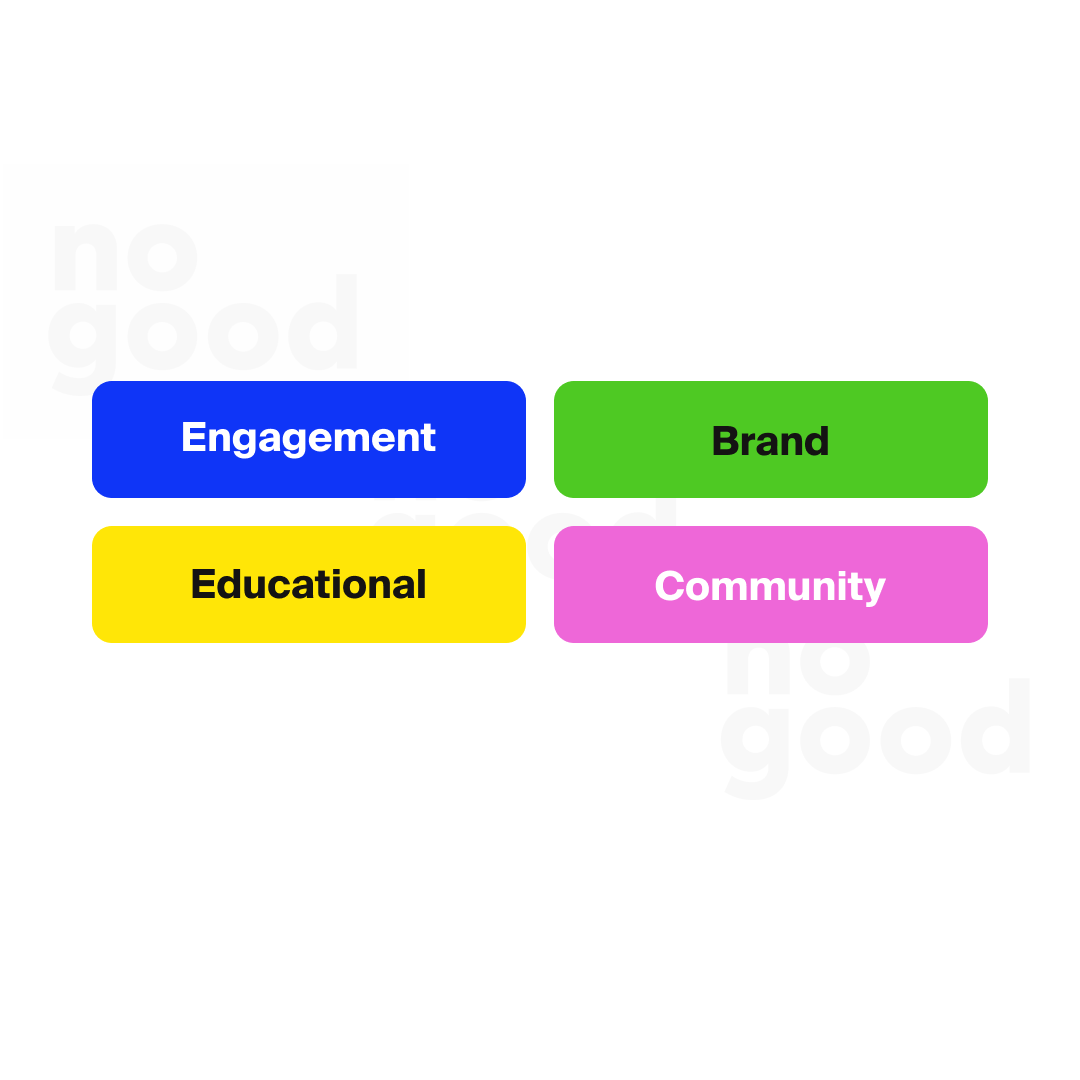
This will make things easier when you begin to start planning your content schedule. You’ll be able to see what kinds of posts are going out and if you are posting too much of one type of post.
Planning this calendar will be the next step. You should have a good idea as to how often you need to be posting and when these posts should go out.
The ultimate goal of having clear content buckets is to eventually be able to identify which content categories truly engage the audience and drive primary growth, so you can double down on learnings that have worked for you and repeat the formulas of success over and over.
After all the planning and categorizing is done, you will need to start making your content. Before launching your TikTok page, aim to have at least 2 weeks worth of content filmed and ready to go. Why make this much content before you launch? Really, it helps prevent burnout and builds in a content “buffer” that will give you and your team time to make more content without falling behind your schedule.
Step 3: Launching
Once your content is made and your schedule is planned, you can begin launching your brand’s TikTok. It is very important to understand that building a brand on TikTok is not an easy task. Overnight success is rare, so having patience will help you as you begin this journey.
You may experience initial success with a video gaining lots of views and then go through periods of low performance. This is extremely common and is the main reason a lot of brands end up giving up on TikTok. No matter what, you need to stay consistent, especially within the first 90 days of experimentation. Taking a few weeks off posting can really hurt a brand’s presence on the app. After launching, the most important thing to do is keep posting content at a good cadence
Step 4: Analyzing
Your strategy should not end as soon as you post your first video; in fact, a majority of your strategy should come from learning about the performance of your previous content. You need to be constantly looking for what is working for your brand and what is not. This involves refining your content on a content bucket and delivery level both, making sure you’re optimizing everything from your editing to your hashtags.
We recommend looking back and tracking performance on a weekly, monthly and quarterly basis for optimal results.
Legacy Brand TikTok vs. New Brand TikTok
Your strategy on TikTok can also vary depending on how long your brand has been around. TikTok is filled with businesses that have seemed to have just sprung up as the app itself became popular. They have carved out a large portion of in-app notoriety just from existing and embracing the platform as a main touch point for their brand. Their content just oozes with that TikTok feel and they are rarely afraid of taking risks. Their content is often unpolished and comes off as genuine for users who have been following their content. Brands like Duolingo post videos with their mascot threatening users (jokingly of course) and it only enhances their popularity on the app. Being a new brand seems to lend itself to being more fun and experimental on the app. The brands that embrace this seem to be the most successful ones.
This begs the question though, is it easier for new brands to launch on TikTok rather than legacy brands?
There is, indeed, an interesting opportunity carved out on TikTok for younger brands. Being a new brand comes with a lot of freedom. You have the opportunity to be really any type of brand you want. If you want to be sassy and clap back at users, go for it. You have the luxury of being lesser known and having more room for experimentation — less history to take into account. You can experiment and even make mistakes without worrying too much about backlash or negative press.
This is not the same for legacy brands. They come with a lot of baggage and consumers already have a preconceived notion of who they are and what their brand voice sounds like. If you want to be a fun and exciting TikTok, brand you may have to spend a good amount of time overcoming what people already think about you. Users might also feel like your brand might be unauthentically trying to cash in on the popularity of the app. There is also the barrier of overcoming rigid brand guidelines and adapting to the more “loose” TikTok guidance.
Having said this, there are a lot of legacy brands that have successfully overcome this hurdle.
Think og brands like Chipotle, The Washington Post, and Taco Bell.
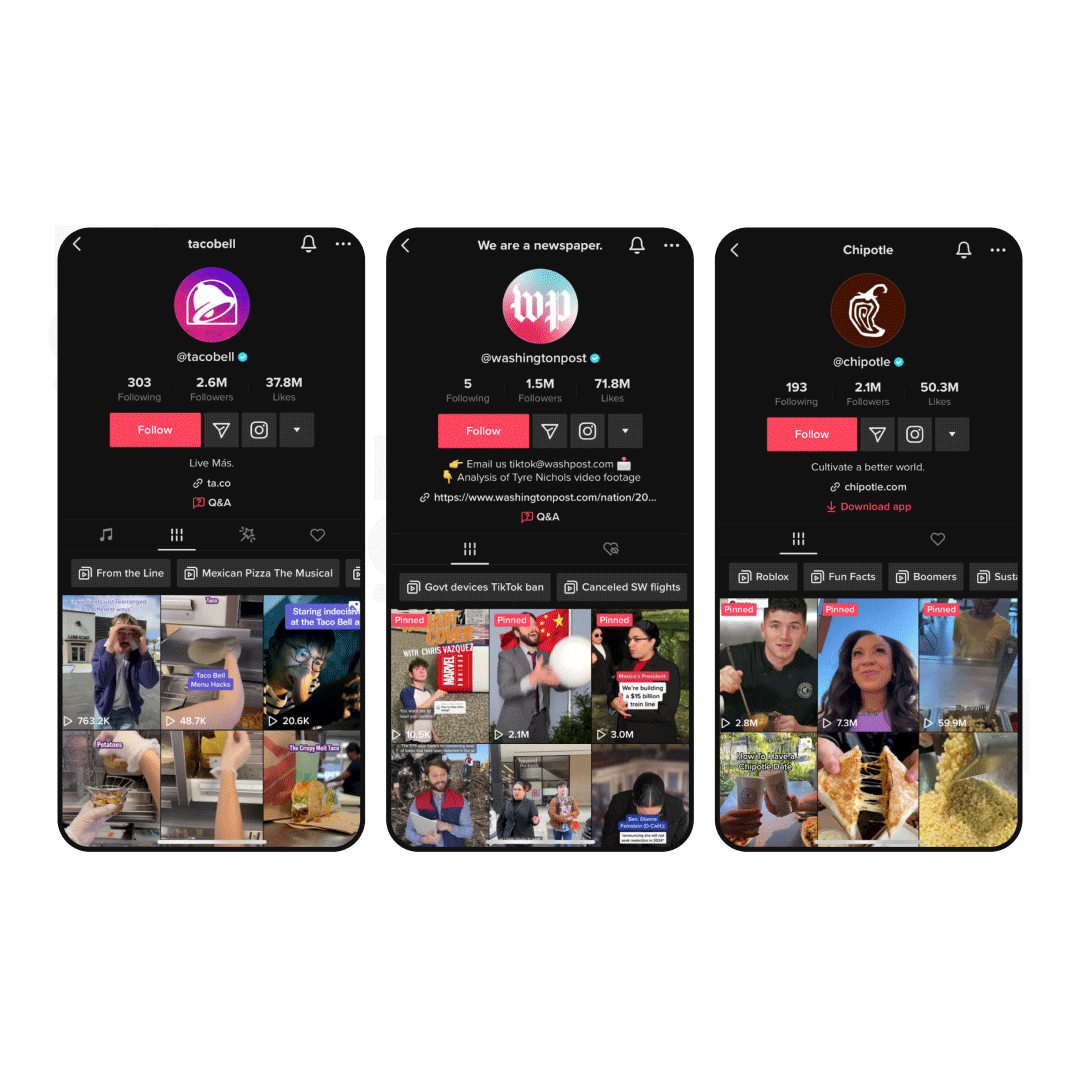
Does Your Brand Need To Be on TikTok?
Yes, TikTok is here to stay and if you’re a brand that is trying to grow and maintain relevance, having a presence on the app is a must. Although it may not seem like it, we’re still in the early days of short form video apps and all signs point to this being the preferred medium for which content and marketing is delivered to users. Facebook, Instagram, Youtube, and even Twitter are all starting to mimic TikTok’s signature feed and it won’t be long until short-form videos become one of the only ways to effectively market your brand in the digital space.
The sooner you learn how to create captivating content, the better your business will be positioned for the future. If you need help launching your brand on TikTok, check out our NoGood TikTok Studio.

